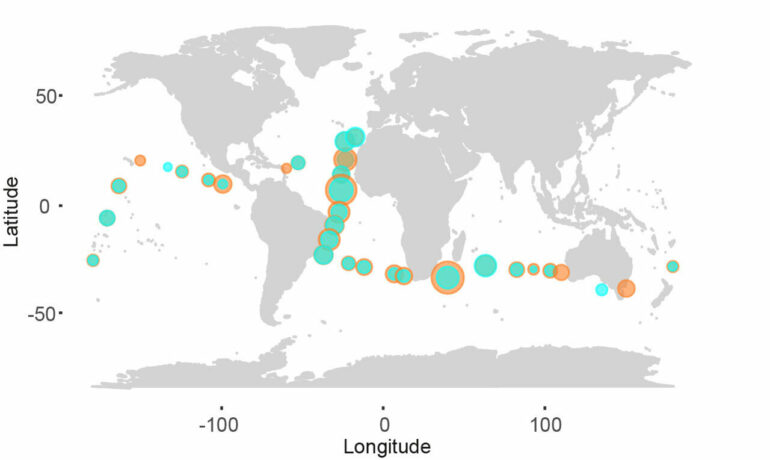A team of researchers led by the Institut de Ciències del Mar (ICM-CSIC) of Barcelona and the Universitat Autònoma de Barcelona (UAB) has revealed the distribution and mercury degradation capacities of heterotrophic bacteria recovered from different oceanographic regions and depths. All the details of this research are reported in an article published recently in the journal Environmental Science and Technology.
“Until now we had a fragmentary understanding of the diversity of microorganisms involved in mercury degradation, as well as, of their presence, their detoxification capacity and thus their role in the mercury biogeochemical cycle in the ocean,” explains the ICM-CSIC researcher and one of the leading authors of the study Silvia G. Acinas, who adds that the new data are key for furthering in this research line. Also, Acinas points out that, so far very few studies have addressed the detection of mercury degradation genes in the ocean covering different oceanographic regions and depths including the bathypelagic ocean (~4000 m depth).
Methylmercury, among the world’s most hazardous chemicals
In 2013, more than 130 countries signed the Minamata Convention, a global treaty to protect human health and the environment from the adverse effects of mercury. Despite the strong global concern about mercury and, in particular, its organic chemical form monomethylmercury (MeHg), which is one of the top 10 chemicals of public health concern, little is known about the fundamental mechanistic understanding of MeHg degradation in the ocean.
That is why researchers decided to focus on the degradation processes of this chemical, for which they analyzed a huge culture collection of more than 2000 bacteria



